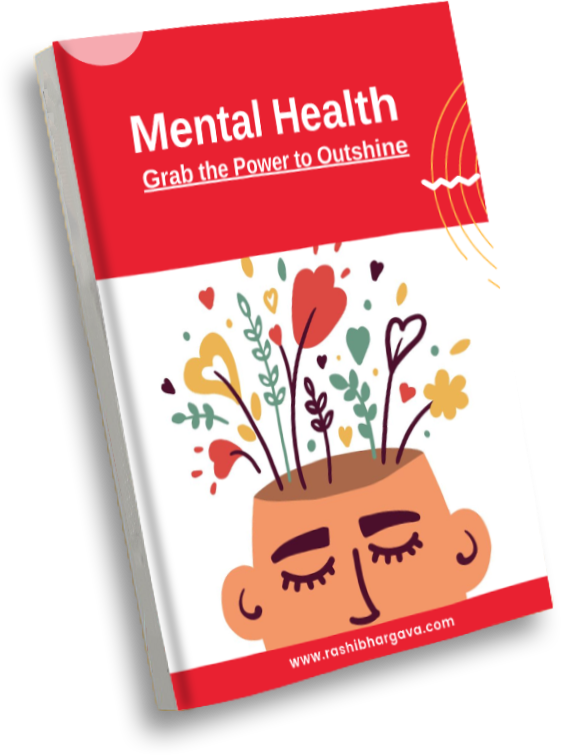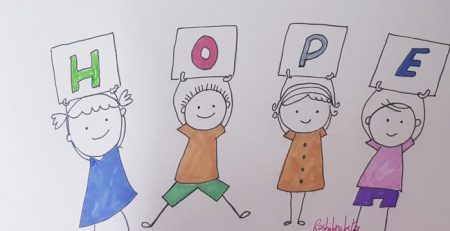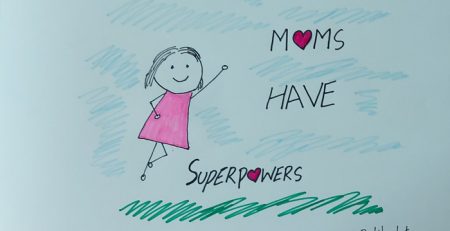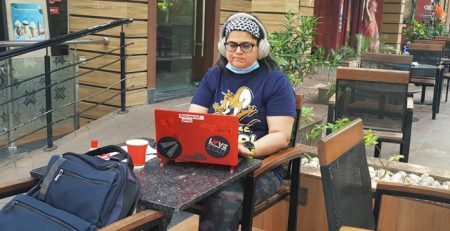Smartphone addiction-Is Real, so are the consequences
Smartphone addiction, sometimes colloquially known as “nomophobia” (fear of being without a mobile phone), is a real thing, more than often fueled by an Internet overuse. The colorful apps and myriad gaming apps are the real source of the problem rather than the smartphone itself.
I am one extreme case when it comes to gadgets. I have always been known as a Gadget lover and nerd in my circle. I can spend hours browsing, in my case not mindless browsing but nevertheless hours of browsing on smartphones has serious consequences on health and overall well being. If I have it my way I will do my entire office work from Mobile itself.
Gadgets like smartphone, tablets are useful and essential tools for communication, research, learning and entertainment but compulsive use of these devices can interfere with work, and relationships. Humans are, by nature, prone to distraction. With smartphones, we literally have a world of distractions at our fingertips.
When you spend more time on social media or in my case browsing for hours, than you do interacting with real people, or you can’t stop yourself from repeatedly checking texts, emails, or apps even when it has negative consequences in your life It may be time to audit check our technology use. Covid Wave 2 made me this self audit.
Cell phones used to be communication tools. How many of us remember our first cell phones. No frills just plain communication tool, tad heavy to hold not the sleek and light weight models you get now. Now, we have GPS, state of art cameras, gaming apps, health trackers, and the list goes on. We turn to our devices for everything from ordering food online, reading news, watching films, listening to music and audiobooks, using GPS for locating addresses. As a kid travelling to school in DTC buses I had amazing sense of direction. Now days I just need to open Google maps. We don’t just use our smartphones for everything ,we have started relying on them.
I read somewhere The brain on “smartphone” is the same as the brain on cocaine: we get an instant high every time our screen lights up with a new notification. It’s all thanks to dopamine, the feel-good chemical that gets released every time you do something you enjoy, like eating your favourite meal or getting a hundred likes on your latest Instagram post. Dopamine reinforces (and motivates) behaviour that makes us feel good and, in turn, can create addiction.
At the same time, having access to a constant flow of information has all but destroyed attention spans: a few years ago, a widely publicized study proved goldfish can focus longer than we can. This increase in ADD-like symptoms has been linked to the overuse of smartphones.
Sharing my personal challenges of smartphone addiction which will resonate with majority :
1.Information overload-Compulsive web surfing, watching videos, or checking news feeds was leading to lower productivity at work and isolating me for hours at a time.
Too much information can lead to decision fatigue and anxiety. Experienced it first hand during the tsunami of Covid Wave 2 that hit us recently. My WhatsApp was buzzing non-stop and it was disheartening to see friends, loved ones struggling for oxygen, ICU Beds. The negativity in the environment got on me.
Compulsive use of the Internet and smartphone apps thinking, you are being smart as you are doing your office work from smartphone was causing me to neglect other aspects of my life, from real-world relationships to hobbies and social pursuits. I have enviable collection of books, stamps and I love photography. But all this took a back seat. I became more of a text and a gadget person. In real world people pick up phones and check on well being of their loved ones and not just message, thinking that they have done their job.
2.Online compulsions, such as online shopping, often lead, to unnecessary buying and started affecting my monthly budget. Most of the brands have their own apps making shopping convenient. But convenience at what Cost? That’s the question to reflect upon.
3.Increasing stress. Using a smartphone for work often means work bleeds into your home and personal life. The boundaries start getting blurred. I started feeling the pressure to always be on. This need to continually check and respond to emails contributed to higher stress levels and my frequent burnout.
4.The constant stream of messages and information from smartphones became overwhelming for my brain and made it impossible to focus attention on any one thing for more than a few minutes without feeling compelled to move on to something else. In computer language we call it context switching. A computer’s CPU switches from one process or thread to a different process or thread. Context switching allows for one CPU to handle numerous processes or threads without the need for additional processors.
5.The persistent buzzing, smartphone started distracting me from important tasks, slowed down my work, and interrupted those quiet moments that are so crucial to creativity and problem solving. Instead of being alone with my thoughts, I was always always online and connected.
6.Disturbed sleep. Excessive smartphone usage started disrupting my sleep and changed my sleep patterns, which if not controlled can have serious impact on overall mental health. In the long run it can impact memory, affect ability to think clearly, and reduce and cognitive and learning skills.
While one can experience similar challenges with a laptop or desktop computer, the size and convenience of smartphones and tablets means that we can take them just about anywhere and gratify our compulsions at any time, which was the case with me. We humans crave for instant gratification. I was initiating client’s transactions from my Mobile app often beyond Business working hours.
Heavy smartphone use can often be symptomatic of other underlying problems, such as stress, anxiety, depression, or loneliness. At the same time, it can also exacerbate these problems. How often we use our smartphone as a “security blanket” to relieve feelings of anxiety, loneliness, or awkwardness in social situations.
I am a shy and introverted person by nature and really feel awkward in social gatherings especially when I don’t know too many people. In such scenarios I am in a habit of using my smartphone as a security blanket. But this way it succeed only in cutting myself off further from people around me. Staring at the phone denied the face-to-face interactions that could have help me build meaningful connections to others, also alleviated my anxiety. In other words, the remedy one had chosen for anxiety (engaging with smartphones), is actually made my anxiety worse.
Some of the common warning sign of smartphone is experiencing withdrawal symptoms when you try to cut back on your smartphone use. These may include:
- Restlessness
- Anger or irritability
- Difficulty concentrating
- Sleep problems
- Craving access to your smartphone or other device
How I am helping myself to cut down my reliance on smartphones
- Took a number of steps to get my smartphone and internet usage under control. But at times addiction is hard to beat on your own and you need outside support. The 4 week HabitStrong Bootcamp on Digital detox helped me streamline things and break my addiction. In the bootcamp we were taught to maintain a daily Habit tracker, track our check ins on various social media channels and WhatsApp. Encouraged us to uninstall non-essential apps. For example I uninstalled LinkedIn and twitter from my Mobile. Now every time I have to access LinkedIn and Twitter, I have to open my laptop. This had ensured that I access twitter and LinkedIn only during my working hours. The boot camp helped me understand my smartphone use. With understanding it became easy to curb habits and regain control of my time.
- I started recognizing the triggers that made me reach my phone. Loneliness, boredom, stress and anxiety. Excessive smartphone use was for me self soothing strategy. Instead of reaching out to smartphone ,I started looking at practicing relaxation techniques.
- I started understanding the difference between interacting in person and interacting virtually. Human beings are social creatures. We are not meant to be isolated or to rely on technology for human interaction. Socially interacting with another person face-to-face—making eye contact, responding to body language—can make you feel calm, safe, and understood, and quickly put the brakes on stress. Interacting through text, email or messaging bypasses these nonverbal cues so won’t have the same effect on your emotional well-being. Besides, friends virtually can’t hug you when a crisis hits, visit you when you’re sick, or celebrate a happy occasion with you.
- During my therapy session I was taught to build my own coping skills. Blogging and doodling started becoming my coping mechanism to beat stress and anger.
- Started modifying my smartphone use and took baby steps in reclaiming my life.
- I have uninstalled all non-essential apps. I don’t use mobile apps for my shopping, banking or investment needs.
- Controlling smartphone use is like going on a diet for me now. Trying to limit my smartphone use to basics like messaging, staying in touch with clients, friends and relatives but within healthy limits. I am reaching out to people more with in person phone calls and increasing my use of landline phone.
- I have set goals for my WhatsApp usage during the day, limiting to checking 3-4 times a day for 5 minutes.
- I switch off mobile or put them on airplane mode when I am doing deep work.
- I have stopped carrying my gadgets to the dining table.
- FOMO is real. Trying to curb that fear. Every few days I take WhatsApp break by uninstalling my WhatsApp. I have accepted I will miss out on gossips with my friends and my faith related news. I have also accepted that it’s impossible to stay on top of everything. Accepting this can be liberating and help break your reliance on technology.
- Screen time in the pandemic has gone up. My eye doc during my annual check up recommended 20 minute rule. According to the rule, every 20 minutes one spends on screen; one should try to look away at something that is 20 feet away from you for a total of 20 seconds.








Leave a Reply